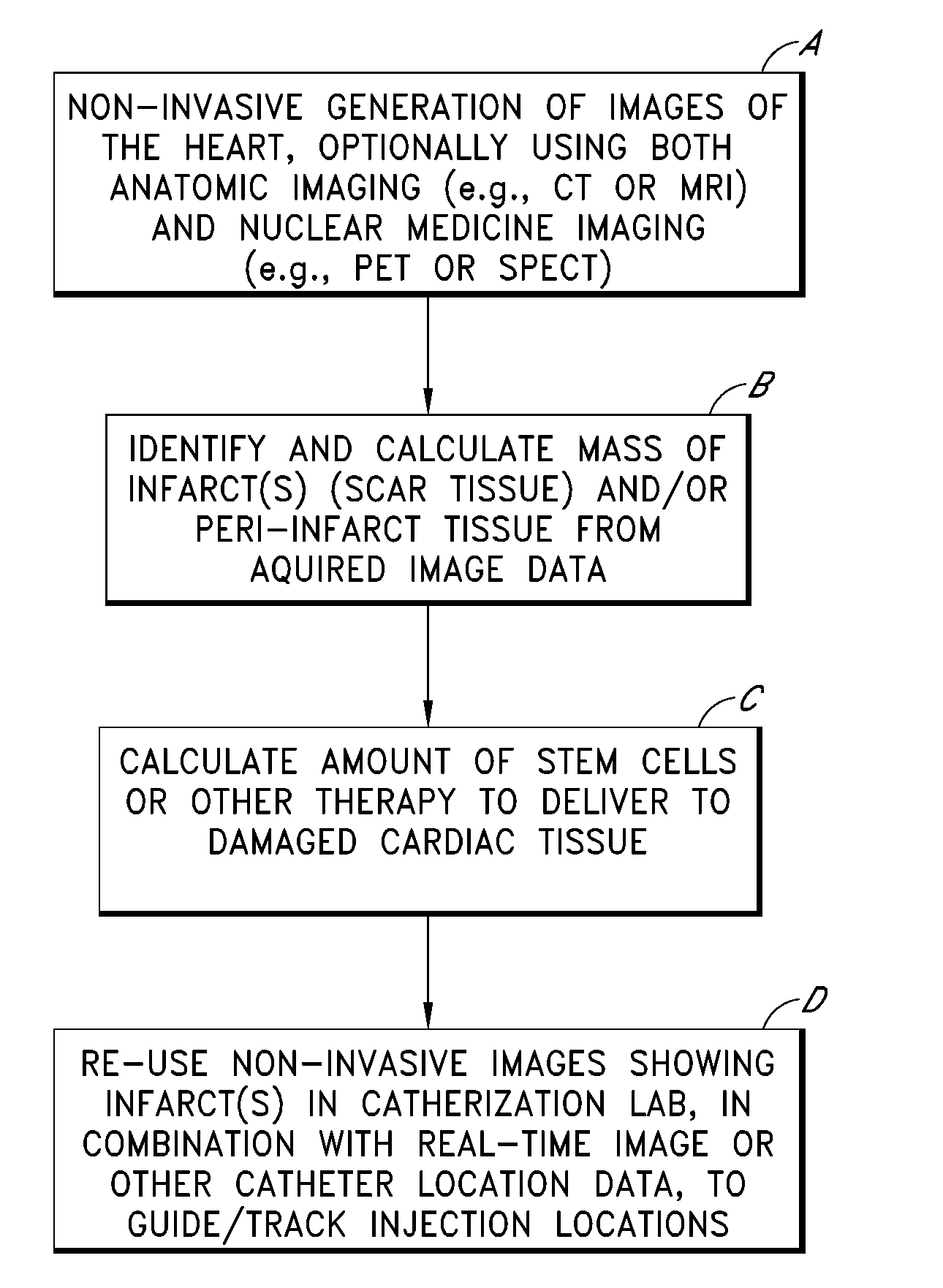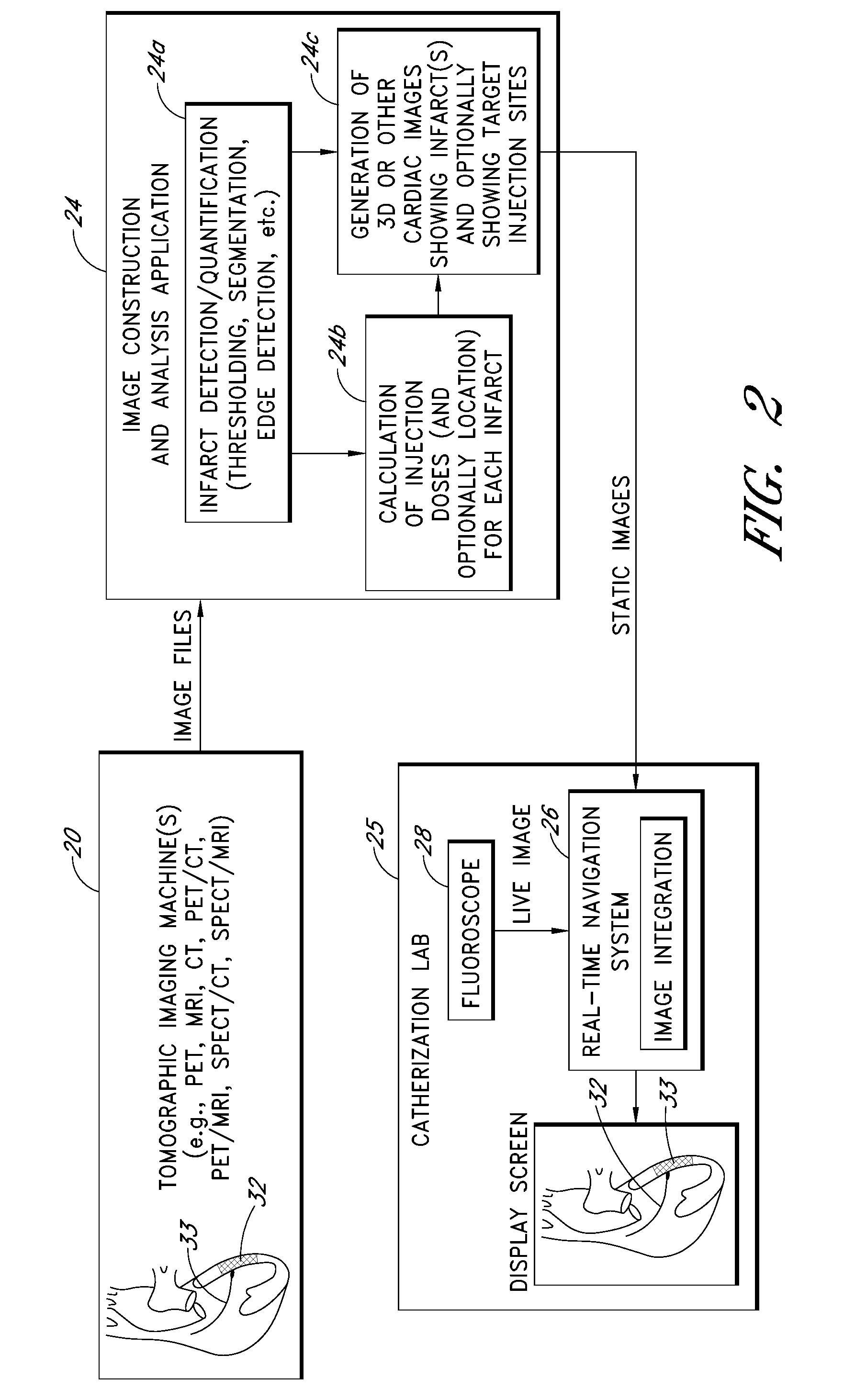Computer-assisted identification and treatment of affected organ tissue
a technology of organ tissue and computer assisted identification, applied in the field of medical imaging technologies and procedures, can solve the problems of high degree of skill required to take the measurements needed to generate the 3d map, insufficient information for determining the amount of therapy to deliver, and physician ordinarily must devote a significant amount of tim
- Summary
- Abstract
- Description
- Claims
- Application Information
AI Technical Summary
Problems solved by technology
Method used
Image
Examples
Embodiment Construction
Specific medical imaging technologies and procedures will now be described for identifying, quantifying and treating myocardial infarcts or other damaged or affected organ tissue. Although the following description focuses on detecting and treating damaged tissue of the heart, as will be apparent, aspects of the disclosed methods are also applicable to disorders involving dead or damaged tissue of other organs, such as the kidneys, brain, liver, bladder, spleen, and pancreas.
I. OVERVIEW (FIGS. 1 AND 2)
FIG. 1 illustrates an overall process, depicted as four steps or blocks A through D, for identifying, quantifying and treating one or more myocardial infarcts (also referred to as scar tissue), and / or damaged or ischemic tissue surrounding such infarcts (referred to as “peri-infarct tissue”). Example implementation details of these four steps are described in further detail in subsequent sections. As will be apparent, the process shown in FIG. 1 can also be applied to organs other than...
PUM
 Login to View More
Login to View More Abstract
Description
Claims
Application Information
 Login to View More
Login to View More - R&D
- Intellectual Property
- Life Sciences
- Materials
- Tech Scout
- Unparalleled Data Quality
- Higher Quality Content
- 60% Fewer Hallucinations
Browse by: Latest US Patents, China's latest patents, Technical Efficacy Thesaurus, Application Domain, Technology Topic, Popular Technical Reports.
© 2025 PatSnap. All rights reserved.Legal|Privacy policy|Modern Slavery Act Transparency Statement|Sitemap|About US| Contact US: help@patsnap.com



